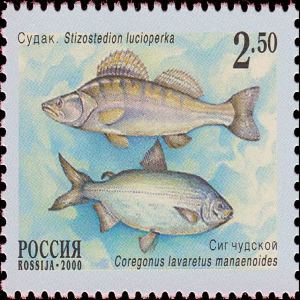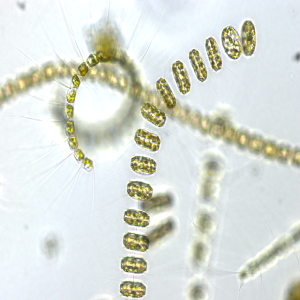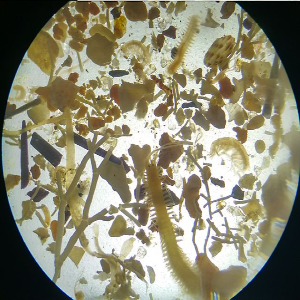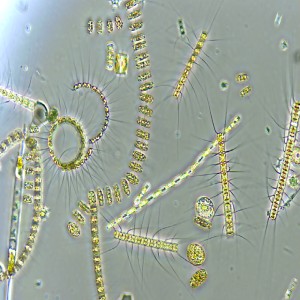Alpine freshwater fish biodiversity assessment: an inter-calibration test for metabarcoding method set up

Accepted: 5 February 2022
Supplementary Materials: 0
HTML: 34
All claims expressed in this article are solely those of the authors and do not necessarily represent those of their affiliated organizations, or those of the publisher, the editors and the reviewers. Any product that may be evaluated in this article or claim that may be made by its manufacturer is not guaranteed or endorsed by the publisher.
The analysis of environmental DNA (eDNA) by high throughput sequencing (HTS) is proving to be a promising tool for freshwater fish biodiversity assessment in Europe within the Water Framework Directive (WFD, 2000/60/EC), especially for large rivers and lakes where current fish monitoring techniques have known shortcomings. These new biomonitoring methods based on eDNA show several advantages compared to classical morphological methods. The sampling procedures are easier and cheaper and eDNA metabarcoding is non-invasive and very sensitive, allowing for the detection of traces of DNA. However, eDNA metabarcoding methods need careful standardization to make the results of different surveys comparable. The aim of the EU project Eco-AlpsWater is to test and validate molecular biodiversity monitoring tools for aquatic ecosystems (i.e., eDNA metabarcoding) to improve the traditional WFD monitoring approaches in Alpine waterbodies. To this end, an inter-calibration test was performed using fish mock community samples containing either tissue-extracted DNA, eDNA collected from aquaculture tanks and eDNA samples collected from Lake Bourget (France). Samples were analysed using a DNA metabarcoding approach, relying on the amplification and HTS of a 12S rDNA marker, in two separate laboratories, to evaluate if different laboratory and bioinformatic protocols can provide a reliable and comparable description of the fish communities in both mock and natural samples. Our results highlight good replicability of the molecular laboratory protocols for HTS and good amplification success of selected primers, providing essential information concerning the taxonomic resolution of the 12S mitochondrial marker in describing the Alpine fish communities. Interestingly, different concentrations of species DNA in the mock samples were well represented by the relative DNA reads abundance. These tests confirm the reproducibility of eDNA metabarcoding analyses for the biomonitoring of freshwater fish inhabiting Alpine and peri-Alpine lakes and rivers.
Boyer F, Mercier C, Bonin A, Le Bras Y, Taberlet P, Coissac E, 2016. obitools: A unix‐inspired software package for DNA metabarcoding. Mol. Ecol. Resour. 16:176–182. DOI: https://doi.org/10.1111/1755-0998.12428
Bylemans J, Gleeson DM, Hardy CM, Furlan E 2018. Toward an ecoregion scale evaluation of eDNA metabarcoding primers: A case study for the freshwater fish biodiversity of the Murray–Darling Basin (Australia). Ecol. Evol. 8:8697–8712. DOI: https://doi.org/10.1002/ece3.4387
Crawley MJ, 2005. Statistics: An Introduction Using R. John Wiley & Sons Inc., Hoboken, USA: 354 pp.
Deiner K, Bik HM, Mächler E, Seymour M, Lacoursière-Roussel A, Altermatt F, et al., 2017. Environmental DNA metabarcoding: Transforming how we survey animal and plant communities. Mol. Ecol. 26:5872–5895. DOI: https://doi.org/10.1111/mec.14350
Deiner K, Lopez J, Bourne S, Holman L, Seymour M, Grey EK, et al, 2018. Optimising the detection of marine taxonomic richness using environmental DNA metabarcoding: the effects of filter material, pore size and extraction method. Metabarcoding and Metagenomics 2:e28963 DOI: https://doi.org/10.3897/mbmg.2.28963
Dickie IA, Boyer S, Buckley HL, Duncan, RP, Gardner, PP, Hogg, ID, et al, 2018. Towards robust and repeatable sampling methods in eDNA‐based studies. Mol. Ecol. Resour. 18:940–952. DOI: https://doi.org/10.1111/1755-0998.12907
Doi H, Fukaya K, Oka S, Sato K, Kondoh M, Miya M, 2019. Evaluation of detection probabilities at the water-filtering and initial PCR steps in environmental DNA metabarcoding using a multispecies site occupancy model. Sci. Rep. 9:1–8. DOI: https://doi.org/10.1038/s41598-019-40233-1
Edgar RC, 2004. MUSCLE: multiple sequence alignment with high accuracy and high throughput. Nucleic Acids Res. 32:1792–1797. DOI: https://doi.org/10.1093/nar/gkh340
Edgar, RC, 2010. Search and clustering orders of magnitude faster than BLAST. Bioinformatics 26:2460–2461. DOI: https://doi.org/10.1093/bioinformatics/btq461
Edgar RC, Flyvbjerg H, 2015. Error filtering, pair assembly and error correction for next-generation sequencing reads. Bioinformatics 31:3476–3482. DOI: https://doi.org/10.1093/bioinformatics/btv401
Eichmiller JJ, Best SE, Sorensen PW, 2016. Effects of temperature and trophic state on degradation of environmental DNA in lake water. Environ. Sci. Technol. 50:1859–1867. DOI: https://doi.org/10.1021/acs.est.5b05672
EN14011, C.E.N., 2003. Water analysis-fishing with electricity for wadable and non-wadable rivers. Eur. Comm. Stand.
European Commission, 2000. Water Framework Directive 2000/60/EC. Off. J. Eur. Communities L 269:1–15.
European Environment Agency, 2018. European waters - Assessment of status and pressures 2018, EEA Report No 7/2018.
Evans NT, Li Y, Renshaw MA, Olds BP, Deiner K, Turner CR, et al, 2017. Fish community assessment with eDNA metabarcoding: effects of sampling design and bioinformatic filtering. Can. J. Fish. Aquat. Sci. 74:1362–1374. DOI: https://doi.org/10.1139/cjfas-2016-0306
Ficetola, GFF, Miaud C, Pompanon F, Taberlet P, 2008. Species detection using environmental DNA from water samples. Biol. Lett. 4:423–425. DOI: https://doi.org/10.1098/rsbl.2008.0118
Goldberg CS, Strickler KM, Pilliod, DS, 2015. Moving environmental DNA methods from concept to practice for monitoring aquatic macro-organisms. Biol. Conserv. 183:1–3. DOI: https://doi.org/10.1016/j.biocon.2014.11.040
Hänfling, B, Handley LL, Read DS, Hahn C, Li J, Nichols P, et al., 2016. Environmental DNA metabarcoding of lake fish communities reflects long-term data from established survey methods. Mol. Ecol. 25:3101–3119. DOI: https://doi.org/10.1111/mec.13660
Hebert PDN, Cywinska A, Ball SL, deWaard JR, 2003. Biological identifications through DNA barcodes. Proc. R. Soc. London. Ser. B Biol. Sci. 270:313LP–321. DOI: https://doi.org/10.1098/rspb.2002.2218
Irvine K, Etiegni CA, Weyl OLF, 2019. Prognosis for long-term sustainable fisheries in the African Great Lakes. Fish. Manag. Ecol. 26:413–425. DOI: https://doi.org/10.1111/fme.12282
Jo T, Murakami H, Yamamoto S, Masuda R, Minamoto T, 2019. Effect of water temperature and fish biomass on environmental DNA shedding, degradation, and size distribution. Ecol. Evol. 9:1135–1146. DOI: https://doi.org/10.1002/ece3.4802
Kéry M, 2010. Introduction to WinBUGS for ecologists: Bayesian approach to regression, ANOVA, mixed models and related analyses. Elsevier Science Publishing Co. Inc, Amsterdam, Netherlands: 320 pp.
Kimura M, 1980. A Simple Method for Estimating Evolutionary Rates of Base Substitutions Through Comparative Studies of Nucleotide Sequences. J. Mol. Evol. 16:111–120. DOI: https://doi.org/10.1007/BF01731581
Kumar S, Stecher G, Li M, Knyaz C, Tamura K, 2018. MEGA X: molecular evolutionary genetics analysis across computing platforms. Mol. Biol. Evol. 35:1547. DOI: https://doi.org/10.1093/molbev/msy096
Kuntke F, de Jonge N, Hesselsøe M, Nielsen JL, 2020. Stream water quality assessment by metabarcoding of invertebrates. Ecol. Indic. 111:105982. DOI: https://doi.org/10.1016/j.ecolind.2019.105982
Lance RF, Klymus, KE, Richter CA, Guan X, Farrington HL, Carr MR, et al, 2017. Experimental observations on the decay of environmental DNA from bighead and silver carps. Manag. Biol. Invasions 8:343. DOI: https://doi.org/10.3391/mbi.2017.8.3.08
Lawson Handley L, 2015. How will the ‘molecular revolution’ contribute to biological recording? Biol. J. Linn. Soc. 115:750–766. DOI: https://doi.org/10.1111/bij.12516
Martin M, 2011. Cutadapt removes adapter sequences from high-throughput sequencing reads. EMBnet.journal 17:10-12. DOI: https://doi.org/10.14806/ej.17.1.200
Miya M, Sato Y, Fukunaga T, Sado T, Poulsen JY, Sato K, et al, 2015. MiFish, a set of universal PCR primers for metabarcoding environmental DNA from fishes: detection of more than 230 subtropical marine species. R. Soc. open Sci. 2:150088. DOI: https://doi.org/10.1098/rsos.150088
Mock T, Kirkham A, 2012. What can we learn from genomics approaches in marine ecology? From sequences to eco‐systems biology! Mar. Ecol. 33:131–148. DOI: https://doi.org/10.1111/j.1439-0485.2011.00479.x
Morales SE, Holben WE, 2011. Empirical Testing of 16S PCR Primer Pairs Reveals Variance in Target Specificity and Efficacy not Suggested by In Silico Analysis. Handb. Mol. Microb. Ecol. I Metagenomics Complement. Approaches 135–141. DOI: https://doi.org/10.1002/9781118010518.ch17
Morey KC, Bartley TJ, Hanner RH, 2020. Validating environmental DNA metabarcoding for marine fishes in diverse ecosystems using a public aquarium. Environ. DNA 2:330–342. DOI: https://doi.org/10.1002/edn3.76
Njiru J, van der Knaap M, Kundu R, Nyamweya C, 2018. Lake Victoria fisheries: Outlook and management. Lakes Reserv. Sci. Policy Manag. Sustain. Use 23:152–162. DOI: https://doi.org/10.1111/lre.12220
Oksanen J, 2016. Vegan: an introduction to ordination.
Paller MH, 1995. Relationships among a number of fish species sampled, reach length surveyed, and sampling effort in South Carolina coastal plain streams. North Am. J. Fish. Manag. 15:110–120. DOI: https://doi.org/10.1577/1548-8675(1995)015<0110:RANOFS>2.3.CO;2
Pawlowski J, Kelly-Quinn M, Altermatt F, Apothéloz-Perret-Gentil L, Beja P, Boggero A, et al., 2018. The future of biotic indices in the ecogenomic era: Integrating (e) DNA metabarcoding in biological assessment of aquatic ecosystems. Sci. Total Environ. 637:1295–1310. DOI: https://doi.org/10.1016/j.scitotenv.2018.05.002
R Core Team, 2015. R: A Language and Environment for Statistical Computing.
Sassoubre LM, Yamahara KM, Gardner LD, Block BA, Boehm AB, 2016. Quantification of environmental DNA (eDNA) shedding and decay rates for three marine fish. Environ. Sci. Technol. 50:10456–10464. DOI: https://doi.org/10.1021/acs.est.6b03114
Sato H, Sogo Y, Doi H, Yamanaka H, 2017. Usefulness and limitations of sample pooling for environmental DNA metabarcoding of freshwater fish communities. Sci. Rep. 7:1–12. DOI: https://doi.org/10.1038/s41598-017-14978-6
Schenekar T, Schletterer M, Lecaudey LA, Weiss, SJ, 2020. Reference databases, primer choice, and assay sensitivity for environmental metabarcoding: Lessons learnt from a re‐evaluation of an eDNA fish assessment in the Volga headwaters. River Res. Appl. 36:1004–1013. DOI: https://doi.org/10.1002/rra.3610
Shaw JLA, Clarke LJ, Wedderburn SD, Barnes TC, Weyrich LS, Cooper A, 2016. Comparison of environmental DNA metabarcoding and conventional fish survey methods in a river system. Biol. Conserv. 197:131–138. DOI: https://doi.org/10.1016/j.biocon.2016.03.010
Strickler KM, Fremier AK, Goldberg CS, 2015. Quantifying effects of UV-B, temperature, and pH on eDNA degradation in aquatic microcosms. Biol. Conserv. 183:85–92. DOI: https://doi.org/10.1016/j.biocon.2014.11.038
Taberlet P, Bonin A, Coissac E, Zinger L, 2018. Environmental DNA: For biodiversity research and monitoring. Oxford University Press, Oxford, UK: 268 pp. DOI: https://doi.org/10.1093/oso/9780198767220.001.0001
Taberlet P, Coissac E, Hajibabaei M, Rieseberg LH, 2012. Environmental DNA. Mol. Ecol. 21:1789–1793. DOI: https://doi.org/10.1111/j.1365-294X.2012.05542.x
Thalinger B, Deiner K, Harper LR, Rees HC, Blackman RC, Sint D, et al., 2021a. A validation scale to determine the readiness of environmental DNA assays for routine species monitoring. Environ. DNA 3:823-836. DOI: https://doi.org/10.1002/edn3.189
Thalinger B, Rieder A, Teuffenbach A, Pütz Y, Schwerte T, Wanzenböck J, et al., 2021b. The Effect of Activity, Energy Use, and Species Identity on Environmental DNA Shedding of Freshwater Fish. Front. Ecol. Evol. 9:1–13. DOI: https://doi.org/10.3389/fevo.2021.623718
Tsuji S, Ushio M, Sakurai S, Minamoto T, Yamanaka H, 2017. Water temperature-dependent degradation of environmental DNA and its relation to bacterial abundance. PLoS One 12: e0176608. DOI: https://doi.org/10.1371/journal.pone.0176608
Turanov SV, Rutenko OA, 2020. The composition of northeast pacific fishes in a fish tank examined by eDNA metabarcoding. bioRxiv 2020.12.21.423745. DOI: https://doi.org/10.1101/2020.12.21.423745
Ward RD, Hanner R, Hebert PDN, 2009. The campaign to DNA barcode all fishes, FISH-BOL. J. Fish Biol. 74:329–56. DOI: https://doi.org/10.1111/j.1095-8649.2008.02080.x
Zhang Z, Schwartz S, Wagner L, Miller W, 2000. A greedy algorithm for aligning DNA sequences. J. Comput. Biol. 7:203–214. DOI: https://doi.org/10.1089/10665270050081478
Zinger L, Bonin A, Alsos IG, Bálint M, Bik H, Boyer F, et al., 2019. DNA metabarcoding—Need for robust experimental designs to draw sound ecological conclusions. Mol. Ecol. 28:1857–1862. DOI: https://doi.org/10.1111/mec.15060
Supporting Agencies
European Regional Development Fund (ERDF)PAGEPress has chosen to apply the Creative Commons Attribution NonCommercial 4.0 International License (CC BY-NC 4.0) to all manuscripts to be published.



 https://doi.org/10.4081/aiol.2022.10017
https://doi.org/10.4081/aiol.2022.10017







